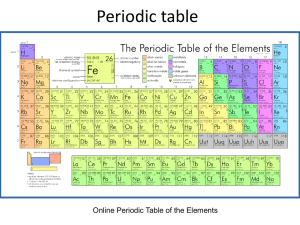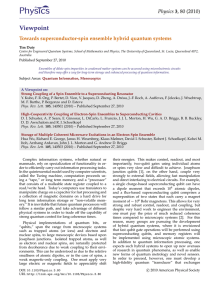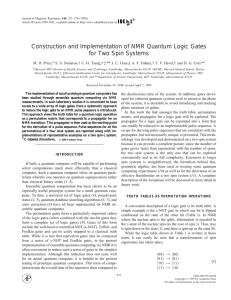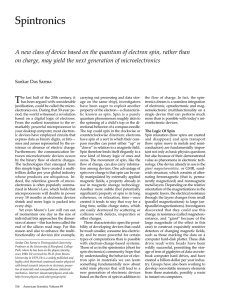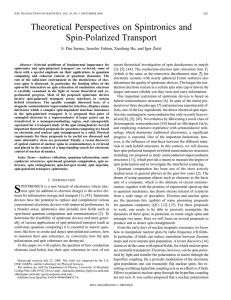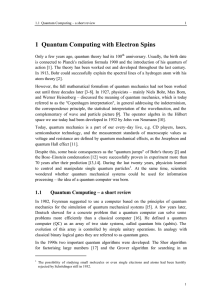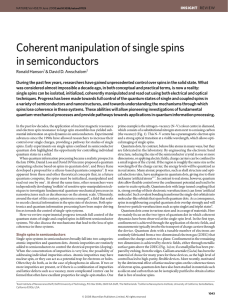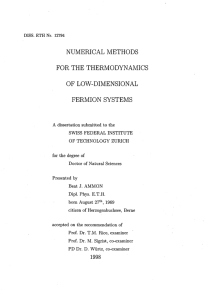PERC 2010 workshop facilitated by Corinne Manogue
advertisement
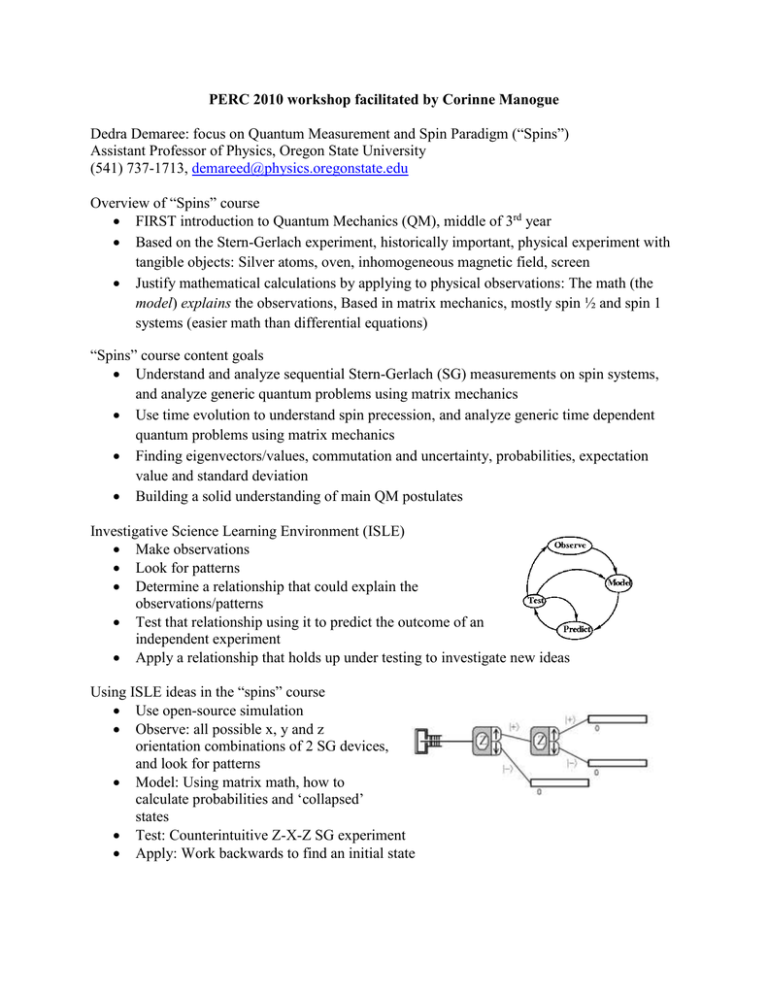
PERC 2010 workshop facilitated by Corinne Manogue Dedra Demaree: focus on Quantum Measurement and Spin Paradigm (“Spins”) Assistant Professor of Physics, Oregon State University (541) 737-1713, demareed@physics.oregonstate.edu Overview of “Spins” course FIRST introduction to Quantum Mechanics (QM), middle of 3rd year Based on the Stern-Gerlach experiment, historically important, physical experiment with tangible objects: Silver atoms, oven, inhomogeneous magnetic field, screen Justify mathematical calculations by applying to physical observations: The math (the model) explains the observations, Based in matrix mechanics, mostly spin ½ and spin 1 systems (easier math than differential equations) “Spins” course content goals Understand and analyze sequential Stern-Gerlach (SG) measurements on spin systems, and analyze generic quantum problems using matrix mechanics Use time evolution to understand spin precession, and analyze generic time dependent quantum problems using matrix mechanics Finding eigenvectors/values, commutation and uncertainty, probabilities, expectation value and standard deviation Building a solid understanding of main QM postulates Investigative Science Learning Environment (ISLE) Make observations Look for patterns Determine a relationship that could explain the observations/patterns Test that relationship using it to predict the outcome of an independent experiment Apply a relationship that holds up under testing to investigate new ideas Using ISLE ideas in the “spins” course Use open-source simulation Observe: all possible x, y and z orientation combinations of 2 SG devices, and look for patterns Model: Using matrix math, how to calculate probabilities and ‘collapsed’ states Test: Counterintuitive Z-X-Z SG experiment Apply: Work backwards to find an initial state Workshop activity: The equations above are the spin operators for x, y and z written in matrix notation, and the eigenstates written in Dirac notation, all given in the z-basis: |+>, |-> 1) Calculate all combinations of Sx, Sy, and Sz operators acting on all the eigenstates: |+>, |->, |+>x, |->x, |+>y, |->y and make a table of your results (Note there are 18 combinations: split the work up so each calculation is done by at least two people, but no single person does more than 6.) 2) What patterns do you observe in the table? 3) Which results stand out to you and how do they stand out? 4) What about the data is surprising to you? 5) What do you think it means to be in a particular ‘basis’? 6) Are any eigenstates unchanged under the multiplication? If so, which combinations? If not, are any nearly the same? What is different about them (their length or their direction)? 7) Based on your observations, what do you think happens when you multiply an operator with a state vector? Devise a rule to describe this. 8) How could you follow up this activity to test your rule?

